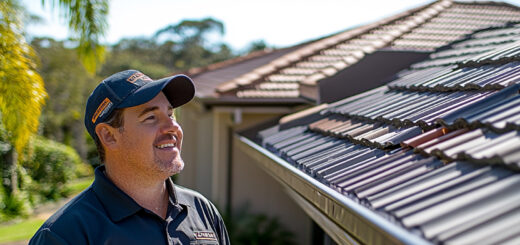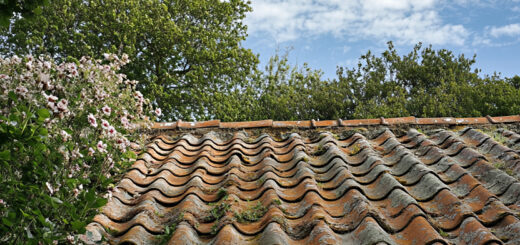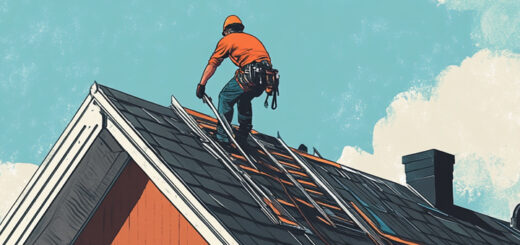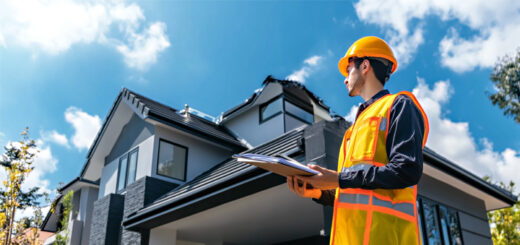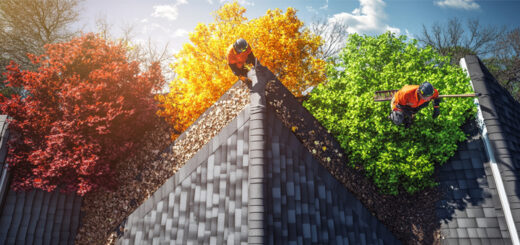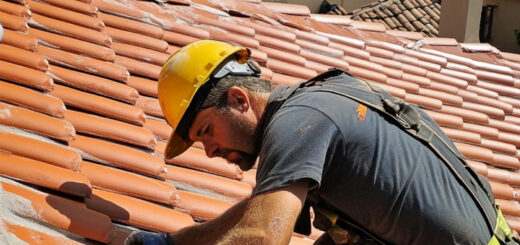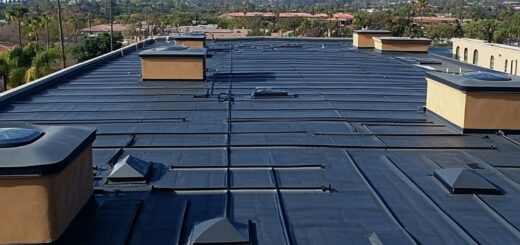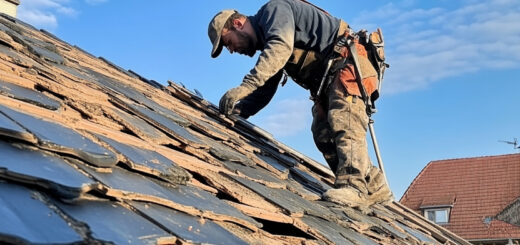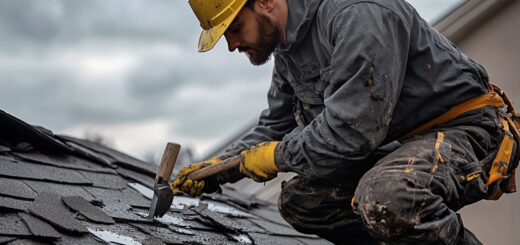Essential Roof Repairs Every First-Time Homeowner Should Know
Understanding the basic components and structure of your roof is essential for maintaining its longevity and ensuring your home stays protected from the elements. The roof structure is more than just a covering; it’s a complex system made up of various components working together to provide shelter and insulation.
At the core of any roof is its framework, often made from wood or metal, which provides the necessary support. This framework includes rafters, trusses, and beams that form the skeleton of your roof. On top of this framework lies the decking or sheathing—typically plywood or oriented strand board (OSB)—which serves as a base for other roofing materials.
The choice of roofing materials significantly influences both the durability and appearance of your roof. Common options include asphalt shingles, metal panels, clay tiles, and slate. Each material has unique properties that make it suitable for different climates and aesthetic preferences.
Roof anatomy also includes important components like underlayment—a protective layer beneath the outer roofing material—and flashing, which prevents water seepage at joints or intersections such as chimneys or skylights. Additionally, gutters play a crucial role in directing water away from your home’s foundation.
There are various types of roofs to consider based on architectural style and practical needs: gable roofs with their triangular shape are popular for their simplicity; hip roofs offer more stability with slopes on all sides; flat roofs provide additional space for rooftop gardens or solar panels.
By familiarizing yourself with these key aspects of roof structure and components, you can better appreciate how each element contributes to the overall functionality and aesthetics of your home’s protective shield.
Common Roofing Problems: Identifying Issues Early
Identifying roofing problems early is crucial to maintaining the integrity of your home and avoiding costly repairs. One of the most common issues homeowners face is roof leaks, which can result from a variety of factors, including damaged shingles or faulty flashing. To prevent these problems from escalating, regular roof inspections are essential.
During an inspection, look for signs of roof damage such as missing or cracked shingles, which can expose your home to the elements and lead to leaks. Additionally, check for any sagging areas on the roof surface, as this could indicate structural issues beneath. Another key tip is to examine your attic space for water stains or mold growth—both are clear indicators that moisture has penetrated your roofing system.
By focusing on early detection of roofing issues through routine inspections and being vigilant about potential warning signs, homeowners can address minor problems before they develop into major headaches. This proactive approach not only extends the lifespan of your roof but also ensures the safety and comfort of your living environment.
DIY vs. Professional Repairs: Knowing When to Call the Experts
When it comes to maintaining your home, the roof is one of the most critical components. However, deciding between DIY and professional repairs can be a challenging decision. Understanding when to tackle a project yourself and when to call in professional roofing services can save you both time and money.
DIY roof repair tips often emphasize safety and simplicity. For minor issues like replacing a few shingles or sealing small leaks, homeowners with the right tools and safety equipment might feel confident enough to handle these tasks themselves. Such repairs can be cost-effective, especially if you’re comfortable working at heights.
However, it’s crucial to recognize when a problem exceeds your DIY capabilities. Larger issues such as extensive water damage, structural problems, or complex installations typically require professional intervention. Knowing when to hire a roofer is vital because professionals have the expertise and equipment necessary for comprehensive assessments and long-lasting solutions.
The cost of roof repairs varies significantly based on factors like material type, extent of damage, and labor rates. While DIY projects may seem cheaper upfront, they could lead to more expensive fixes down the line if not done correctly. Professional roofing services often provide warranties on their work, offering peace of mind that your investment is protected.
In conclusion, while some minor roof repairs can be managed with DIY efforts using appropriate tips and precautions, significant issues should always prompt a call to experienced professionals who can ensure quality workmanship and durability for your home’s protection.
The Importance of Regular Maintenance for Prolonging Roof Life
Regular maintenance is crucial for extending the lifespan of your roof and ensuring it remains in optimal condition. By adhering to a comprehensive roof maintenance checklist, homeowners can prevent minor issues from developing into costly repairs. Seasonal roof maintenance tasks play a significant role in this process, as they address the specific challenges that each season presents.
In the spring, it’s essential to inspect your roof for any damage caused by winter storms or heavy snowfall. This includes checking for loose or missing shingles, assessing the condition of flashing around chimneys and vents, and clearing away any debris that may have accumulated in gutters.
Summer is an ideal time to conduct routine roof care by cleaning gutters and downspouts to ensure proper drainage during rain showers. Additionally, inspecting for signs of moss or algae growth and removing them can prevent moisture retention that could lead to structural damage.
As autumn approaches, focus on removing fallen leaves from gutters and ensuring that water can flow freely away from your home. This helps prevent ice dams during winter months when temperatures drop.
Finally, winter calls for monitoring your roof after heavy snowfalls to avoid excess weight accumulation. Safely removing snow when necessary can protect your roof’s integrity.
By following these seasonal tasks as part of a regular maintenance routine, you can significantly extend the lifespan of your roof while safeguarding your home against potential weather-related damages.
Budgeting for Roof Repairs: What Every First-Time Homeowner Should Consider
As a first-time homeowner, budgeting for roof repairs can seem daunting, but with the right approach, it becomes manageable. Understanding the costs of common roof repairs is crucial. Typically, minor repairs like fixing leaks or replacing damaged shingles can range from $150 to $400. More extensive repairs, such as addressing sagging roofs or replacing large sections of shingles, might cost between $1,000 and $3,000.
To keep expenses in check, consider budget-friendly roofing solutions. Regular maintenance and inspections can prevent small issues from escalating into major problems. Opting for durable materials like metal or asphalt shingles could also save money in the long run due to their longevity and resistance to weather damage.
Planning an emergency roofing fund is another essential step. Setting aside a small amount each month specifically for unforeseen roof repairs ensures that you’re financially prepared when issues arise unexpectedly. By understanding these aspects of roofing costs and planning accordingly, first-time homeowners can maintain their roofs effectively without financial strain.
Sustainable Roofing Options: Eco-Friendly Repair and Replacement Choices
When it comes to roofing, choosing sustainable materials can make a significant impact on the environment while also enhancing the energy efficiency of your home. Sustainable roofing options are designed to minimize environmental impact by using recycled or natural materials and promoting energy conservation.
One popular choice is metal roofing, which is often made from recycled materials and can be recycled again at the end of its life. Metal roofs are durable, long-lasting, and reflect solar heat effectively, reducing cooling costs in warmer months.
Another eco-friendly option is clay or slate tiles. These natural materials provide excellent insulation and have a long lifespan, often outlasting traditional asphalt shingles by decades. Although they may come with a higher upfront cost, their durability and minimal maintenance requirements make them a wise investment for environmentally-conscious homeowners.
For those interested in green building practices in roofing, installing a green roof can offer both aesthetic and environmental benefits. Green roofs involve planting vegetation on top of the roof structure, which helps improve air quality, reduce stormwater runoff, and insulate the building naturally.
Additionally, rubber roofing made from recycled tires is gaining popularity as an eco-friendly alternative. This material is not only durable but also helps reduce landfill waste by repurposing discarded tires into functional roofing solutions.
By considering these sustainable roofing materials and eco-friendly roof ideas during repair or replacement projects, homeowners can contribute to greener building practices while enjoying long-term benefits such as reduced energy costs and increased property value.
The Impact of Weather on Your Roof and How to Protect It Year-Round
The roof of your home serves as the first line of defense against the elements, making it crucial to understand how weather impacts its longevity and integrity. Weatherproofing your home’s rooftop area is essential for maintaining its durability throughout the year. Various weather conditions, from intense sun to heavy rain and snow, can lead to wear and tear that might compromise your roof’s structure.
To mitigate such risks, consider implementing storm damage prevention tips. Regular inspections are key; check for loose or missing shingles after storms and ensure that gutters are clear of debris to prevent water accumulation. Additionally, reinforcing areas prone to leaks with high-quality sealants can significantly reduce potential water damage.
As winter approaches, winterizing your house’s top covering becomes a priority. Ensure proper insulation in your attic to prevent ice dams from forming on the roof edge due to melting snow refreezing at night. Installing a roof rake can also help remove excess snow buildup safely.
By taking these proactive steps in weatherproofing and maintaining your roof throughout different seasons, you not only extend its lifespan but also safeguard your home from costly repairs down the line.
Proactive Measures to Safeguard Your Investment
In conclusion, adopting proactive measures is essential for safeguarding your investment and ensuring long-term financial security. By conducting thorough research before making any investment decisions, you can better understand the market dynamics and identify potential risks. Diversifying your portfolio is another critical strategy, as it helps mitigate losses by spreading risk across various asset classes. Regularly monitoring your investments allows you to stay informed about market trends and make timely adjustments to your strategy when necessary. Additionally, consulting with financial advisors or experts can provide valuable insights and personalized advice tailored to your specific goals and risk tolerance. By taking these proactive steps, you can protect your investments from unforeseen challenges while maximizing the potential for growth and success in an ever-changing financial landscape.
